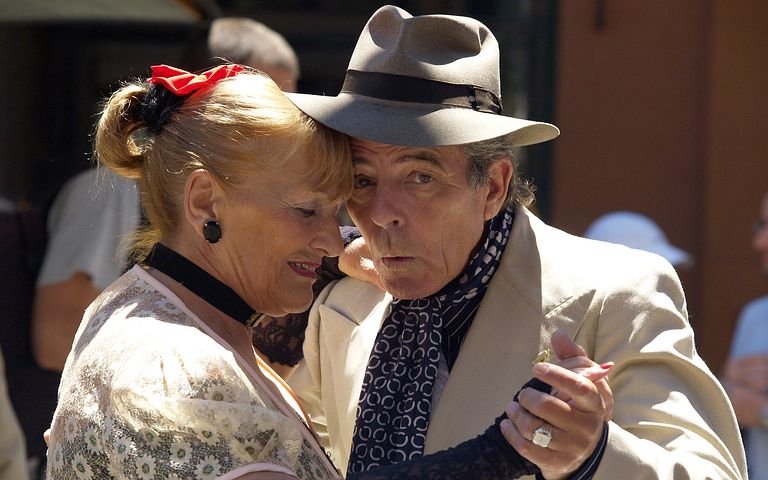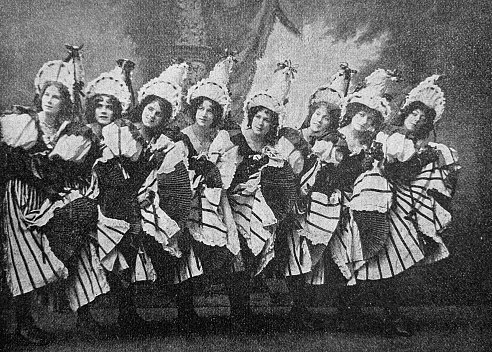Dance as means of communication.
In the olden days, during the stone age, records show that Africans were mostly wanderers moving from place to place and living inside caves. Their major occupation was hunting for animals which served them for food. When the man comes home in the evening he tells his family stories of his exploits for the day. Imitating the movements of the animals that he encountered in the forest. Some scholars believe that it was from Hus imitation of the movement of birds that "DANCE" was born.
 [source] (https://pixabay.com/photos/emotional-couple-tango-dance-50309/)
[source] (https://pixabay.com/photos/emotional-couple-tango-dance-50309/)
Hence, dance is an old form of art believed to be older than both drama and music. Over the years, dance had become modified special area, profession and an academic discipline.
In Nigeria, many universities with departments of Theater Arts teach dance as an academic subject engaging in both theory and practice of dance.
Now, if you take your car to a mechanic and he wants to open up your engine for repairs he will undertake a procedure that has a particular methodology or technique.
Similarly, dance too has its own methodology or technique of learning, performance and appreciation. In this post today, we will learn about dance and dance techniques. We will also learn how the body which is the tool of the dancer can be employed technically for dance.
 [source] (https://pixabay.com/vectors/silhouette-dance-silhouette-dancer-3311639/)
[source] (https://pixabay.com/vectors/silhouette-dance-silhouette-dancer-3311639/)
WHAT IS DANCE
dance as an art is in its simplest form a rhythmic movement to music either alone or with a partner or in a group.
Dance is also the use of the body to communicate a message. However, while drama is rooted in words, music in songs, dance is rooted in body movement.
People dance for a variety of reasons. It is often jocularly said by Europeans that all Africans are dancers. This is partially true judging from the variety of dances that we have within ethnic groups, within geographical or cultural Zones and the wide Variety of reasons that stimulates dance in us.
As Africans we have mood dances to express sadness, joy, war and Victory. We also have ceremonial dances as in festivals funerals, marriages, coronations etc. We also have Cultic dances in religious worships which are ritualistic in nature. Apart from all these, we have occupational dances. Each guild of workers has its own kind of music and hence its own kind of dance. In some cultures, there are specific dances for specific age group.
Therefore, dance is a performing art that is used to communicate a variety of messages. We even have popular dance for sheer entertainment and enjoyment. However, Africans dance for various purpose.

NEED FOR TECHNIQUE
If a car mechanic wants to open up an engine he uses a method. If a carpenter wants to build a table, he uses a method. Each of the two has to master the method for functioning in his profession. In the same way, a dancer must master the technique for his profession, since dance has its own methodology.
Also, dance differs from one culture to another. This is why Europeans dance Ballet, while Nigerians have either the Bats dance of the Yoruba, Atilogwu of the Igbo or the Bori dance of the Hausa. Each of these different dances have their own peculiarities, hence their techniques must be mastered before they can be performed.
However, we shall also consider three basic denominators that are common to all dance. You as students of dance being introduced to dance must know these basic denominators that are found in basically all dances. They are The factors that underlie technique. Once they are mastered, the dancer has no problem in dancing. They are the dancer's tool, the "body", the place he occupies during performance either on stage or on an open area called the 'SPACE' the way he responds to rhythm, either slowly or very fast called the "TIME"
THE BODY AS AN INSTRUMENT FOR DANCE
Apart from dance, the various parts of the body can be used as instruments. This was why Rudolf Laban was able to propound his theories on dance based on the instrumental nature of the body. The first technique therefore, which you must know as a dancer is how instrumental your body is to dance?
Preston -Dunlop (1980) remarked that hands are the most obvious parts of the body used daily as instruments. They can be used to pick up things as a hammer, a scoop and so on. Hence they are dynamic.
 [source] (https://pixabay.com/photos/ballet-dance-ballerina-scene-1376250/)
[source] (https://pixabay.com/photos/ballet-dance-ballerina-scene-1376250/)
However, all joints of the body are dynamic and can hence be used as parts attached to them can be used as instruments, because they can move, parts such as the hands, the legs, the head, and the torso can also move. Try the following exercises.
1• turn your head to the left, the right, down, backwards. Then roll it round so that it can rotate. Jack it forward and backwards.
2• Raise your hands above your head. Drop it to shoulder level. Rotate it such that it moves round, slowly then very fast.
3• stamp your right foot on the floor. Mark time. Walk on the spot. Run on the spot. Move your right leg to the right shaking your toes. Do the same to the left.
4•Bend your body from the waist forward, backward, sideways. Rotate the waist.
All these movements are possible because the body is an instrument. These movements from the basic technique for dance. You must also learn to be able to control these movements if you want to be a good dancer.
Hence, the first basic technique of dance is to know how to use the body for the purpose of dance.
Valerie Dunlop identified five body actions, as a movement theme and hence dance theme. They are gesture, stepping, locomotion, jumping and turning. All these are what is employed as techniques in dance.
SPACE
Another element that lends to a mastery of dance is the space that surrounds the dancer. This element must be mastered by the dancer because it is the medium in which dance takes place. If you notice the various movements in the last set of exercises, you will see that the various parts of the body are moving through space.
Hence, the space that surrounds a dancer is, what his body passes through while the body is in motion for dance.
If you stand in the centre of a stage or a room for instance, you will notice six basic spatial areas around you. Above your head, below you, in front of you, behind you, to your right and to your left.
The dancer must know as a master of technique that these basic areas exist and must be conscious in what exact position his body must be to pass through this space. Some dances are done sitting, some standing, some kneeling, and some bending or a combination of two or more of these. All the dancers in each given situation are seen to be using space. A fine or proper use of the body movement in space, therefore, leads to a fine dance. A mastery of the technique of space makes the dancer a good dancer.
TIME
timing in dance refers to the speed of dance, hence it refers to the tempo with which the body moves through space. A dancer must have a sense of timing and know the speed at which his body should respond to music, the stimulus for dance. This is called the Kinesthetics sense. When the music is slow you try and move fast to it. The contrast will soon dawn on you. But when you move slowly to it then you will be in line with the tempo of the rhythm of the music. This is what is known as timing in dance. A wrong timing produces a poor dance. Timing can also refers to the duration of a dance. It could be how long a whole dance or even the parts of the whole referred to as patterns will last.
Lastly, the dancer must also keep to count when some movements are repeated. A sense of time by all the dancers in a group dance brings out the beauty of the dance. Hence, if a particular movements is to be done to a count of eight before changing, anybody that does it less or over will be clearly noticed especially if the other dancers are to leave that spot for another spot on stage.
So timing, having an ear for music, clear heart for remembrance to keep to count are the first basic techniques a dancer must learn.
 [source] (
[source] (
@tipu curate
Upvoted 👌 (Mana: 40/60) Liquid rewards.
Thank you so much
Congratulations @ladygospel! You have completed the following achievement on the Hive blockchain and have been rewarded with new badge(s) :
You can view your badges on your board and compare yourself to others in the Ranking
If you no longer want to receive notifications, reply to this comment with the word
STOPDo not miss the last post from @hivebuzz: